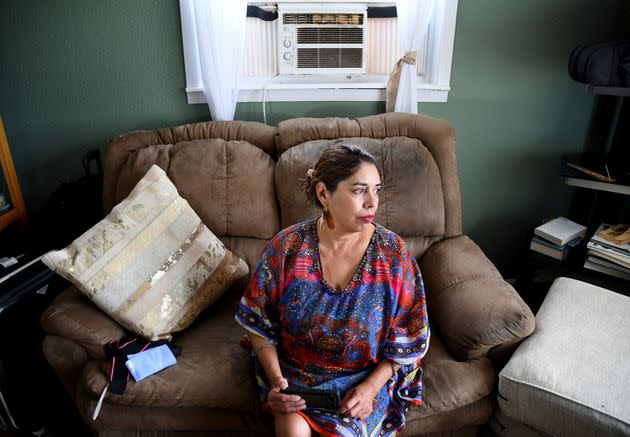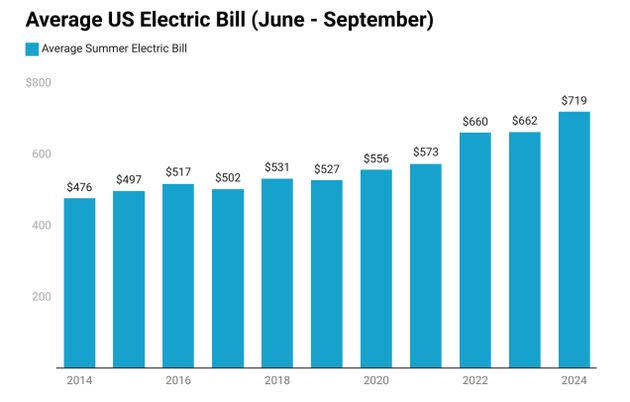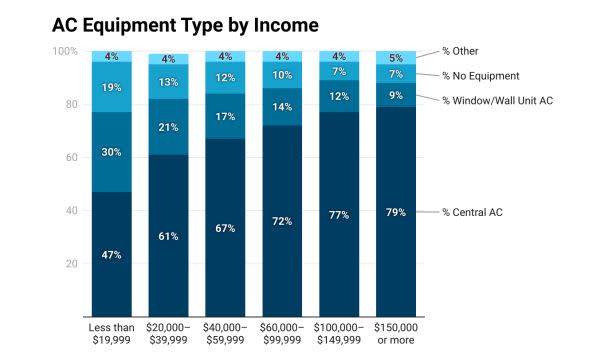Americans’ Electric Bills Are Rising Faster Than Inflation Amid Punishing Heatwave
Electricity prices surged by nearly twice as much as overall inflation across the United States, new federal data show, putting life-saving air conditioning out of reach for a growing number of Americans struggling to pay utility bills.
The average cost of electricity bills last month rose by 4.4% compared to June of last year, surpassing overall economy-wide inflation of 3%, according to the latest consumer price index data the Bureau of Labor Statistics released Thursday.
While prices fell compared to May, only the cost of housing and transportation services saw a bigger yearly jump than electricity. The price of natural gas piped into homes for heating and cooking increased by 3.7% compared to the same period last year.
The price surge comes as brutal heat waves roast broad swaths of the U.S. and the globe, as the combined effect of climate change and El Niño weather cycles send global temperatures to new heights.
The National Weather Service already identifies extreme heat as the country’s No. 1 weather-related killer. And that’s undercounting the number of deaths linked to overheating, say researchers, who warn that official data and underdeveloped reporting methods fail to capture the full toll.

But rising electricity prices, limited government aid and worsening blackouts across the U.S. only set the stage for more tragedy.
Last year, Americans’ collective debt to utility companies soared above $20 billion, a record. For nearly a decade, survey after survey has found about one-third of Americans say they skipped basic necessities to pay their energy bills.
The average U.S. electricity bill from June through September, meanwhile, is forecast to hit $719 — a nearly 8% spike from the previous year and the highest average in 10 years, according to a recent report from the National Energy Assistance Directors Association and the Center for Energy Poverty and Climate, two groups made up of energy officials from state governments. In 2014, for comparison, the cost of cooling in the summer was about $476.
Roughly one-in-five American families in poverty have no air conditioning, the report found. Just 17 states plus the District of Columbia have regulations barring utilities from cutting off electricity for nonpayment during extreme summer heat.

The latest federal budget reduced the amount of funding for the Low Income Home Energy Assistance Program, or LIHEAP, by $2 billion. About 80% of that program goes toward helping poor households heat their homes during the winter, leaving just 20% designated for cooling. Due to the cutbacks, states “will have no choice this year but to reduce the number of households served by about one million,” the NEADA report concluded.
“Temperatures keep going up every year,” NEADA Executive Director Mark Wolfe said at a press briefing, according to the trade publication Utility Dive. “If you look at longer-term projections, this is not going to change.”
These high power prices have complicated efforts by states and the federal governments to turn away from planet-warming fossil fuels.

But a new analysis from the research group Energy Innovation put the blame for these price spikes on electricity transmission costs, climate change-driven natural disasters and roller-coastering natural gas prices — not the transition to green energy.
States with higher levels of wind and solar generation, such as New Mexico, Iowa and Oklahoma, experienced the lowest rate increases since 2010, the analysis found.
Between 2021 and 2023, electricity prices rose faster than inflation in California, where wildfires have taken a severe toll on the grid; Massachusetts, where a lack of pipelines and a heavy dependence on imported natural gas following the shutdown of New England’s nuclear reactors has made the state vulnerable to market swings; and West Virginia, where record-high global coal prices hit hard in a state reliant on aging coal-fired plants.
The Biden administration has made billions of dollars available for states to make new and existing homes more energy-efficient, in a bid to slash costs for customers (for example, by helping homeowners keep cooled air from leaking outside).
Some GOP-controlled states, such as Florida, initially rejected that money — though the Sunshine State had a change of heart last month. Republicans in Congress are also looking to repeal a rule requiring that developers make new homes more efficient, which federal researchers projected would save homebuyers $2 billion on their utility bills.
Beyond air conditioning, cutbacks in government spending are making even analog options for cooling down more dangerous. In New York City, two teenage sisters from the Bronx drowned last week at Brooklyn’s Coney Island Beach as the nation’s largest and wealthiest city faces a shortage of lifeguards.

 Yahoo News
Yahoo News 